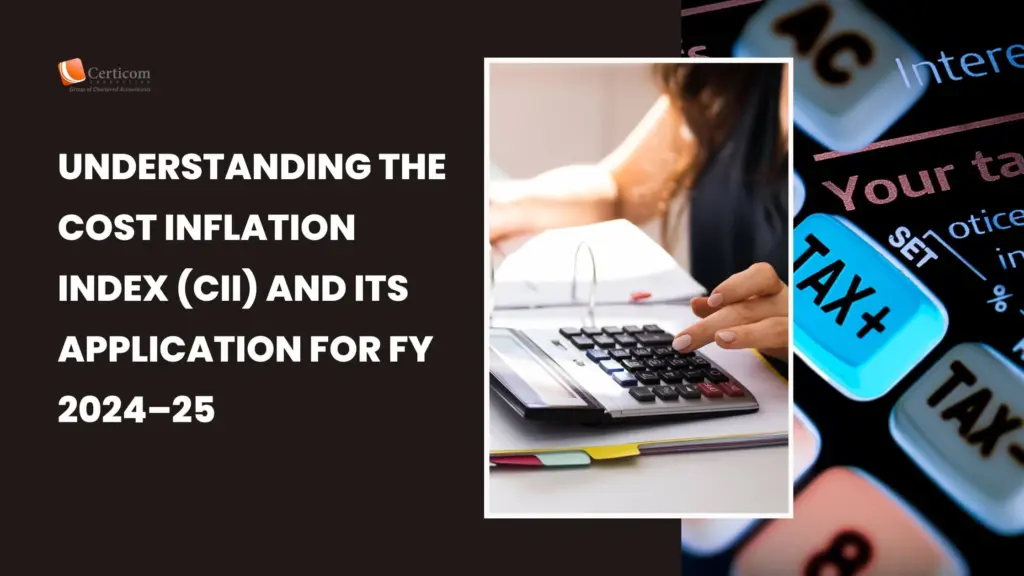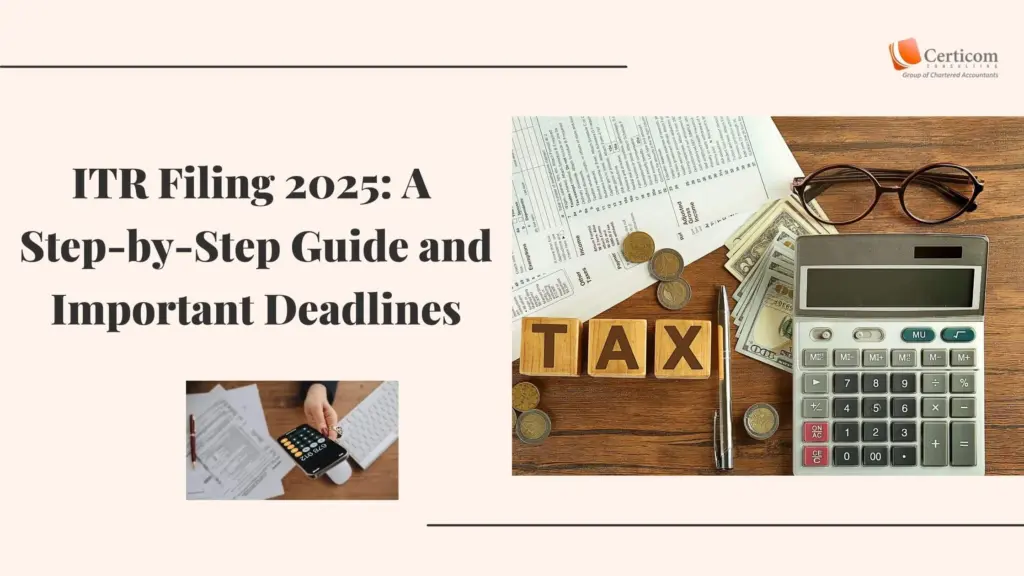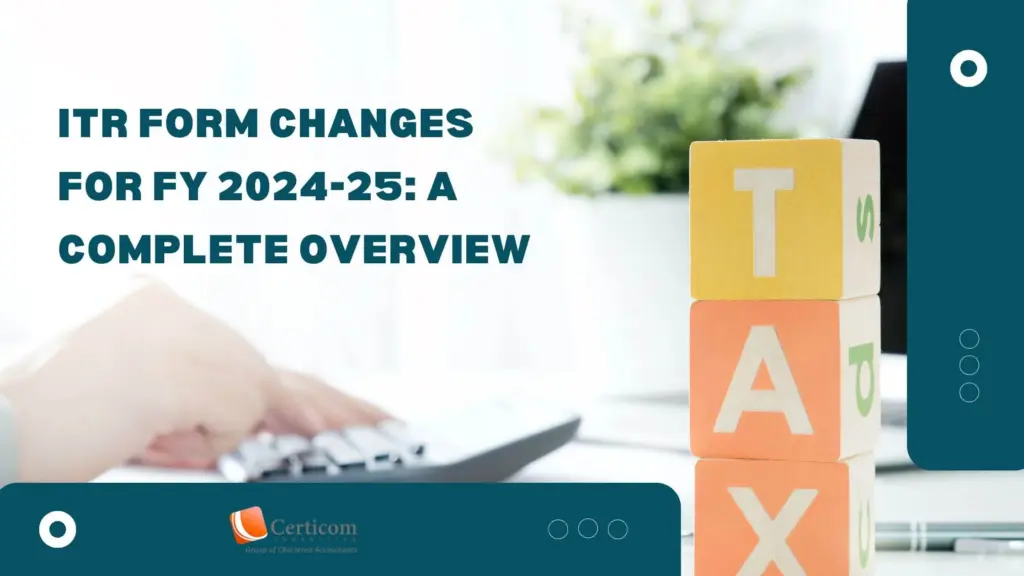Understanding the Cost Inflation Index (CII) and Its Application for FY 2024–25

Inflation causes a decline in the purchasing power of money over time. Simply put, what ₹100 can buy today might not fetch the same quantity of goods in the future. To account for this inflationary impact in taxation, particularly in capital gains computation, the Cost Inflation Index (CII) plays a crucial role.
What is the Cost Inflation Index (CII)?
The Cost Inflation Index (CII) is used in income tax to adjust the cost of capital assets for inflation. This index helps calculate the long-term capital gains by factoring in inflation, effectively reducing the taxable gain amount.
Instead of taxing profits purely based on the difference between sale and purchase prices, the CII adjusts the purchase price to reflect current value—thus offering tax relief.
CII for FY 2024-25
The Cost Inflation Index for the financial year 2024-25 has been notified as 363.

Indexed Cost of Improvement – Formula
When improvements are made to a capital asset, the cost of those improvements can also be indexed for inflation, just like the acquisition cost. The formula is:
Where:
CII for year of transfer = CII for the year in which the asset is sold.
CII for year of improvement = CII for the year in which improvement was made.
Updated Taxation Rule: Discontinuation of Indexation Benefit
As of 23rd July 2024, the government has withdrawn the indexation benefit on long-term capital gains for most assets. This marks a significant shift in tax calculation for investors.
Key Implications:
No Indexation Allowed: Purchase costs can no longer be adjusted for inflation for most long-term capital assets.
Higher Tax Liability: Gains will be computed using the actual purchase cost, potentially increasing the tax burden.
Exception for Land/Building:
For sale of land or buildings acquired before 23rd July 2024, taxpayers can opt for either:
12.5% tax without indexation, or
20% tax with indexation.
For assets purchased on or after 23rd July 2024, only the 12.5% tax rate without indexation is available if the asset qualifies as long-term.
Cost Inflation Index Table (FY 2001–02 to FY 2024–25)
| Financial Year | CII |
|---|---|
| 2001–02 (Base Year) | 100 |
| 2002–03 | 105 |
| 2003–04 | 109 |
| 2004–05 | 113 |
| 2005–06 | 117 |
| 2006–07 | 122 |
| 2007–08 | 129 |
| 2008–09 | 137 |
| 2009–10 | 148 |
| 2010–11 | 167 |
| 2011–12 | 184 |
| 2012–13 | 200 |
| 2013–14 | 220 |
| 2014–15 | 240 |
| 2015–16 | 254 |
| 2016–17 | 264 |
| 2017–18 | 272 |
| 2018–19 | 280 |
| 2019–20 | 289 |
| 2020–21 | 301 |
| 2021–22 | 317 |
| 2022–23 | 331 |
| 2023–24 | 348 |
| 2024–25 | 363 |
The Role of the Base Year in CII
The base year for CII is 2001–02, assigned an index value of 100. This change was introduced to simplify property valuations, as obtaining accurate market values for properties acquired before 1981 posed challenges.
For assets acquired before April 1, 2001:
Taxpayers can choose the higher of actual purchase price or Fair Market Value (FMV) as of April 1, 2001.
Indexation is then applied from FY 2001–02 onwards.
Who Notifies the CII?
The Central Government publishes the Cost Inflation Index annually in the Official Gazette. It is calculated as:
CII = 75% of the average rise in the Consumer Price Index (CPI – Urban) for the preceding year.

Important Considerations
For inherited property, the CII should be taken for the year when the previous owner purchased the asset.
Ignore improvement costs incurred before April 1, 2001 for indexation.
No indexation for bonds or debentures (except capital indexation bonds and Sovereign Gold Bonds issued by RBI).
From April 1, 2023, no indexation benefit is available for debt mutual funds.
From July 23, 2024, indexation benefits are discontinued across the board, except for certain land/building transactions as explained above.
The Cost Inflation Index was a crucial tool for taxpayers to mitigate the tax impact of inflation on long-term investments. With the recent policy changes, it’s vital to reassess your investment strategy and understand the taxation implications, especially if dealing with real estate or legacy assets.
Related Post
Understanding the Cost Inflation Index (CII) and Its Application for FY 2024–25
ITR Form Changes for FY 2024-25: A Complete Overview
Book A One To One Consultation Now For FREE
How can we help? *



